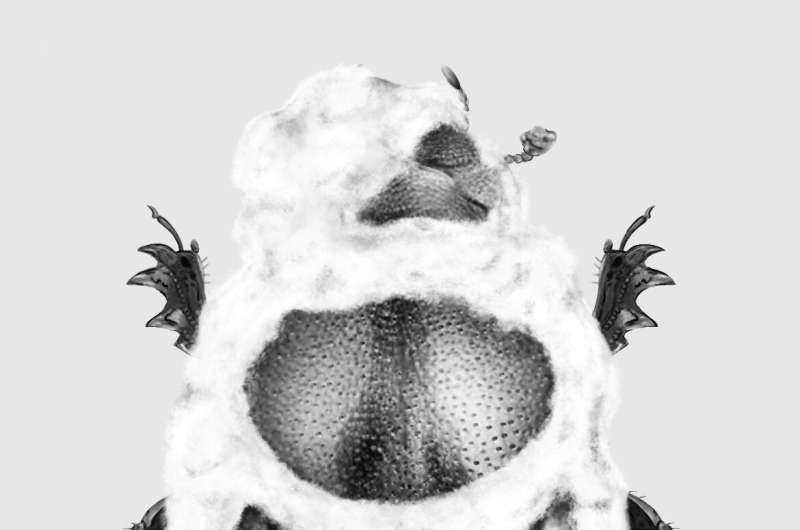This article has been reviewed according to Science X's editorial process and policies. Editors have highlighted the following attributes while ensuring the content's credibility:
fact-checked
trusted source
proofread
Pathogenic fungus found to infect dung beetles in Australia

A locally found pathogenic fungus, Beauveria australis, has for the first time been observed infecting imported dung beetles in Australia.
The discovery by Australia's national science agency, CSIRO, suggests local fungi may have contributed to the failure of some imported dung beetle species to become established. The findings have been published in the Journal of Invertebrate Pathology.
CSIRO has been studying and using imported dung beetles since the 1960s to reduce the ecological damage caused by the arrival of cows and sheep with the First Fleet in 1788.
Beauveria are related to the Cordyceps fungi popularized in post-apocalyptic TV series The Last of Us.
Their spores infect insect hosts, spread through their bodies and eventually kill them. The infected beetles were in a rearing laboratory separate to the quarantine facility where newly arrived beetles are kept.
CSIRO entomologist, Dr. Valerie Caron, said this is the first time this fungus has been found in the scarab beetle family, although we already knew it was here and could infect grasshoppers, ants, wasps and other beetles.
"We looked at the three species of dung beetles recently introduced to Australia from Morocco," Dr. Caron said.
"The fungus was not found in the original populations in the quarantine facility, and it doesn't occur in Morocco, so it's a new pathogen for these dung beetles."
"Given this, the fungus infection most likely came from local soil and dung used in the rearing facility and posed no threat to humans," she said.
CSIRO mycologist, Dr. Cecile Gueidan, from the Australian National Herbarium, said fungi spores are picked up from the soil or other infected insects.
"The spores attach to an insect's body and germinate, and the fungal filaments then pierce the insect's exoskeleton," Dr. Gueidan said.
"Once they reach the body cavity, they change form and spread out, producing toxins and enzymes to digest the insect from the inside," she said.
We also found Beauveria bassiana, which is sometimes called the "icing sugar fungus" as it looks like the insect has been dusted with thick patches of icing sugar where the fungus is growing.
B. bassiana is found around the world, but B. australis is only found in Australia and Asia.
Dr. Caron said the outbreak occurred in a rearing laboratory, in a population that had been raised for several generations from eggs taken from the quarantine population. The beetles were being prepared for release in the field.
The outbreak was successfully managed, preventing further spread to other laboratory populations.
Australia's dung beetle program has released 44 species of dung beetles from Europe and Africa since the 1960s, with 23 species established in the field.
They clean up livestock dung that would otherwise accumulate on the soil surface and which can't be processed by our native dung beetle species, helping recycle nutrients and reduce fly breeding.
"Fungi may be a potential challenge for the establishment of newly introduced dung beetle species," Dr. Caron said.
"Further research is needed to find out how widespread these native Beauveria species are, their virulence and how they affect dung beetles in the field," she said.
Finding this local fungi infecting dung beetles offers an interesting insight into how imported dung beetles are impacted by the Australian environment.
More information: Valerie Caron et al, Beauveria australis finds a new host in French dung beetles introduced to Australia, Journal of Invertebrate Pathology (2023). DOI: 10.1016/j.jip.2023.107889
Provided by CSIRO


















